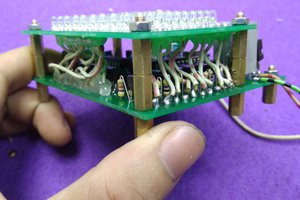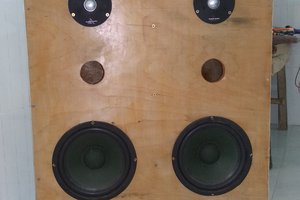DESIGNING THE CIRCUIT AND PCB
So this is the game circuit I designed it using easyeda. here I am using atmega328 as the heart of this project. Then I converted the circuit into PCB. I designed the PCB with a dimension of 89mm*50mm because this is the standard size of visiting cards. I used the insert image tool of easyeda to make the design. this is just about art you can make with your ideas. After designing the PCB I downloaded the Gerber file. Then I went to jlcpcb.com. I choose JLCPCB because they offer only 2$ for 5 PCBs. To order PCBs Just click on order now and select your Gerber file. after uploading, I choose the black colour .8mm thickness and placed the order. after 2 weeks I received the PCB. The PCB has only .8mm thickness but the quality is perfect as I expected.
COMPONENTS NEEDED
ATMEGA328P-AU* 1
0805 capacitor 22pf *2
0805 capacitor 100nF* 2
SMD WS2812B-B*16
0805 LED SMD* 2
0805 resistors 1K* 3
0805 resistors10K 1
16MHZ*1
micro USBFemale*1
download BOM from here
SOLDERING

after grabbing all the components I started soldering, I started with the micro USB port. Then I soldered all the other components. After soldering the control circuit I started soldering neopixel LEDs and after finishing that I soldered corresponding Switches. After 1 hour I completed all soldering and now our PCB looks like this.
PROGRAMMING
after completing the soldering I connected the USB cable and tested it. Now it's time to upload the code. I connected the spi pins to an ISP Arduino and uploaded the sketch
DOWNLOAD CODE FROM HERE
PLAY AND ENJOY
This is how I made a visiting card with a 4*4 tic tac-toe game PCB. You can download the circuit, code, and gerbers from the links. Hope you enjoyed and learned something from my tutorial.
VIDEO TUTORIAL
 esc
esc















 youkito1991
youkito1991
 Arnab Kumar Das
Arnab Kumar Das
 Chris
Chris 
Neat project. Looks like it was first out in 2021...
BOM_PCB_badge_2_2021-11-18.csv